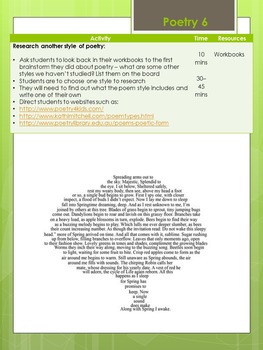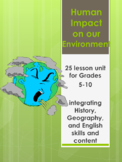Human Impact on the Environment -25 lessons including poetry, spelling and more!
- PPTX
Also included in
- I have bundled together 2 of my best-selling units to save you money with all the good stuff included!HUMAN IMPACT ON OUR ENVIRONMENTThis 5 week unit is designed to help teach students about the many impacts humans have had on our environment. It incorporates:* History -skills and knowledge* GeograpPrice $35.98Original Price $39.98Save $4.00
Description
This 5 week unit is designed to help teach students about the many impacts humans have had on our environment.
It incorporates:
* History -skills and knowledge
* Geography - understanding of nature and the world around us
* Science - understanding the environment and how we impact on it
* English - reading, writing, comprehension, viewing and responding
The unit of work includes a plan for 5 lessons per week, roughly 60mins per lesson. It includes activities on:
* Air pollution
* Water pollution
* Land Clearing and Deforestation
* Waste
* Specific environmental vocabulary and spelling from Grades 5-9
* Poetry - Haiku, Acrostic, Quatrains, Cinquains, and more
* Analysis of Dr Seuss' text "The Lorax"
* Analysis of the film "Wall-E"
This product includes all 71 slides with detailed lesson plans, worksheets, websites and resource links, and much more.
**PLEASE NOTE** - if purchased before Jan 14, 2020, there is a link to a video missing on slide 43 (thankyou to the customer who let me know!) Here it is: https://www.youtube.com/watch?v=Se12y9hSOM0&list=PLITdDkbHFB05_ogOen9nll3fYdq04YPTX&index=14&t=236s
The unit for purchase after Jan 14, 2020 has been updated here on TpT.
The hard copy of thie unit is also available to purchase on CD that will be mailed to you, which also includes video clips, visual images, and bonus activities. See my store on TeachersPayTeachers to preview.
Thankyou for previewing and purchasing this product - please leave feedback on how this unit worked for you as I'm always looking to tweak and improve!






